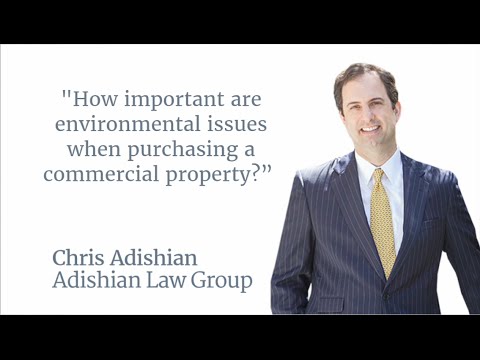Environmental issues in real estate transactions are critical, and can be a source of significant financial liability.
California Attorney and Real Estate Broker Chris Adishian answers the question, “How important are environmental issues when purchasing a commercial property?” at the South Bay Association of Realtors Commercial Attorney Panel on June 2, 2015.
Transcript
This is in the larger context in the topic of due diligence. They call it inspections for residential, but for commercial properties they tend to call it due diligence. There’s a whole slew of factors to look at as you’re investigating the purchase of the property, but absolutely, you should look at environmental issues. For example, we’re in El Segundo – almost every property transaction in El Segundo has environmental issues. Why? Well, the Standard Oil refinery used to operate before there was Chevron and before there were environmental regulations, so a lot of the ground in El Segundo has environmental issues under the current laws.
So every time a property trades you should know what you’re getting, and often times that involves hiring an environmental consulting firm. They have reports – if you’re not familiar – they’re called “Phase 1’s”. That’s sort of an initial inquiry to see if they are any issues.
As a buyer, you want to know that because you might have to pay to have it remediated. And as a seller you want to know that because the buyer is going to ask, but also so when you close the transaction both parties have the same information and you don’t have a claim coming back to you. Most of these issues can be remediated. There’s a whole industry out there and there are consultants available on the state of California Website.
Again, if you have a good team as you’re going through your acquisition or your sale, your attorney will point out, from his or her checklist, this is something to really be aware of: environmental risk of the actual land. It will also go into your leases, and usually there is a baseline that says “landlord knows of this as of today.” Then when the tenant comes in, they reference that baseline so when the tenant leaves they can say “this is a preexisting condition” or “the tenant caused this to happen” – and if the tenant caused it to happen then it is their job to remediate.
